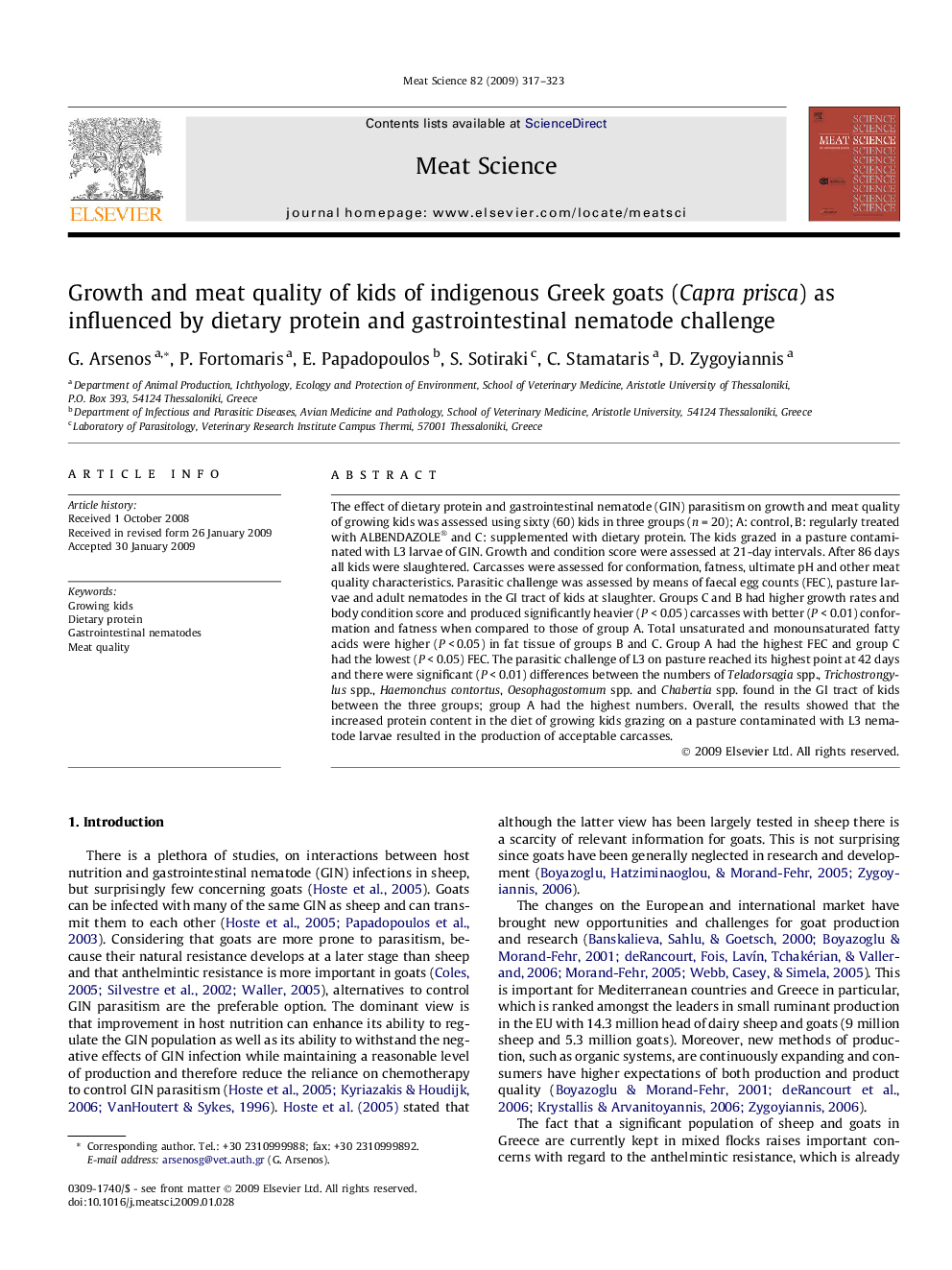| Article ID | Journal | Published Year | Pages | File Type |
|---|---|---|---|---|
| 2451287 | Meat Science | 2009 | 7 Pages |
The effect of dietary protein and gastrointestinal nematode (GIN) parasitism on growth and meat quality of growing kids was assessed using sixty (60) kids in three groups (n = 20); A: control, B: regularly treated with ALBENDAZOLE® and C: supplemented with dietary protein. The kids grazed in a pasture contaminated with L3 larvae of GIN. Growth and condition score were assessed at 21-day intervals. After 86 days all kids were slaughtered. Carcasses were assessed for conformation, fatness, ultimate pH and other meat quality characteristics. Parasitic challenge was assessed by means of faecal egg counts (FEC), pasture larvae and adult nematodes in the GI tract of kids at slaughter. Groups C and B had higher growth rates and body condition score and produced significantly heavier (P < 0.05) carcasses with better (P < 0.01) conformation and fatness when compared to those of group A. Total unsaturated and monounsaturated fatty acids were higher (P < 0.05) in fat tissue of groups B and C. Group A had the highest FEC and group C had the lowest (P < 0.05) FEC. The parasitic challenge of L3 on pasture reached its highest point at 42 days and there were significant (P < 0.01) differences between the numbers of Teladorsagia spp., Trichostrongylus spp., Haemonchus contortus, Oesophagostomum spp. and Chabertia spp. found in the GI tract of kids between the three groups; group A had the highest numbers. Overall, the results showed that the increased protein content in the diet of growing kids grazing on a pasture contaminated with L3 nematode larvae resulted in the production of acceptable carcasses.
